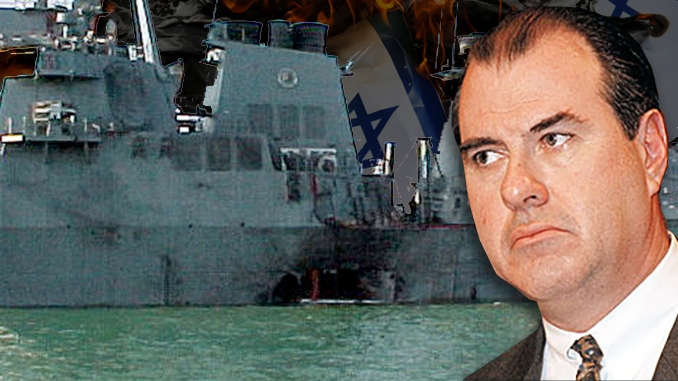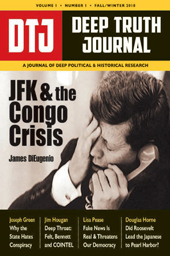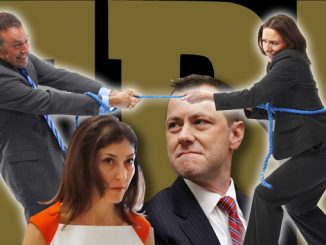
By S.T. Patrick
America will soon mark the 20th anniversary of the bombing of the USS Cole, an October 12, 2000 attack that killed 17 and injured 39. The USS Cole was a U.S. Navy guided missile destroyer that had docked in the port of Aden in Yemen for refueling. As the story goes, a small boat carrying two al Qaeda suicide bombers and some C4 explosives approached the Cole. The explosives blew a hole in the hull of the destroyer. The tragic event has been portrayed as an unheralded warning, an intelligence failure proving that al Qaeda was a formative enemy of the United States. The bombing occurred 11 months before 9/11. Had we only taken this warning more seriously, the narrative says, we might have been able to be better prepared for the coming attacks on New York and Washington, D.C. Yet, there was one American official who doubted the official story of the USS Cole. His name was John O’Neill.
 O’Neill was a special agent in charge at the FBI. After the 1993 bombing of the World Trade Center, O’Neill began looking into the primary causes of these anti-American acts. He assisted in the capture of Ramzi Yousef after the 1993 bombing, but he always had doubts about the central source of power within the terrorist operations. O’Neill was a part of the conflict between the FBI and the CIA leading up to 9/11. Information wasn’t being shared, and the internecine squabbles between intelligence services had all but isolated them into forced independence, sharing little to nothing vital with other agencies.
O’Neill was a special agent in charge at the FBI. After the 1993 bombing of the World Trade Center, O’Neill began looking into the primary causes of these anti-American acts. He assisted in the capture of Ramzi Yousef after the 1993 bombing, but he always had doubts about the central source of power within the terrorist operations. O’Neill was a part of the conflict between the FBI and the CIA leading up to 9/11. Information wasn’t being shared, and the internecine squabbles between intelligence services had all but isolated them into forced independence, sharing little to nothing vital with other agencies.
Osama bin Laden had for years been the primary focus of O’Neill’s work, but even he, as one of the world’s foremost experts on bin Laden, began having doubts about the U.S. crusade against “Islamic terrorism.” He was the most committed tracker of bin Laden and al Qaeda, yet he kept getting stymied by the Clinton and George W. Bush administrations. O’Neill believed there was something one layer above Osama and his network that the administrations were protecting. As soon as O’Neill would get close to understanding it, the White House would step in and direct O’Neill elsewhere.
O’Neill once described his frustration in a story that would appear in the Irish Times. He described the main obstacles in investigating al Qaeda as “U.S. oil interests.”
Labeled a problem, O’Neill was passed up for positions as assistant director for national security and the head of the New York FBI field office.

Around this time, he had become suspicious of the veracity of the popular narrative regarding the USS Cole. Assigned to the role of commander of the team looking into the Cole bombing in Yemen, O’Neill almost instantly clashed with U.S. Ambassador to Yemen Barbara Bodine. He returned to the United States after two months, but he desired to return to Yemen and the investigation. He never made that return. Ambassador Bodine blocked his return, and FBI Director Louis Freeh pulled O’Neill’s team from the investigation. It was later reported that O’Neill had told colleagues that he believed the Cole bombing was a Popeye cruise missile specially configured and launched from an Israeli Dolphin submarine.
There are easy comparisons to make between the USS Cole and the 1967 attack on the USS Liberty. If the Cole was indeed hit by Israeli fire, like the Liberty, it would have been to galvanize public opinion against al Qaeda and against the Democratic Party nominee in 2000. The Bush war on terror could commence as planned once Dick Cheney and the remnants of the Project for the New American Century were in the White House.
In May 2000, O’Neill had found himself immersed in what defenders called a “smear campaign” within the FBI. The bureau said O’Neill had misplaced a briefcase full of “highly classified information” while at a conference in Tampa, Fla. This triggered an ongoing investigation of O’Neill by the FBI, making the longtime anti-terrorism expert look careless and untrustworthy.
Seeing clearly the writing on the wall, O’Neill retired from the FBI in August 2001. He used his contacts to land what seemed like an ideal position for someone interested in large-scale security. He was the new head of security of the World Trade Center. On Sept. 10, 2001, O’Neill moved into his new office in the WTC’s North Tower. The following day, Sept. 11, 2001, O’Neill died trying to lead people out of the tower.
The man officially credited with masterminding the USS Cole bombing, Jamel Ahmed Mohammed Ali Al-Badawi, was killed during a U.S. air strike on Yemen in January 2019.
S.T. Patrick holds degrees in both journalism and social studies education. He spent 10 years as an educator and now hosts the “Midnight Writer News Show.” His email is [email protected]. He is also an occasional contributor to TBR history magazine and the current managing editor of Deep Truth Journal (DTJ), a new conspiracy-focused publication available from the AFP Online Store.




